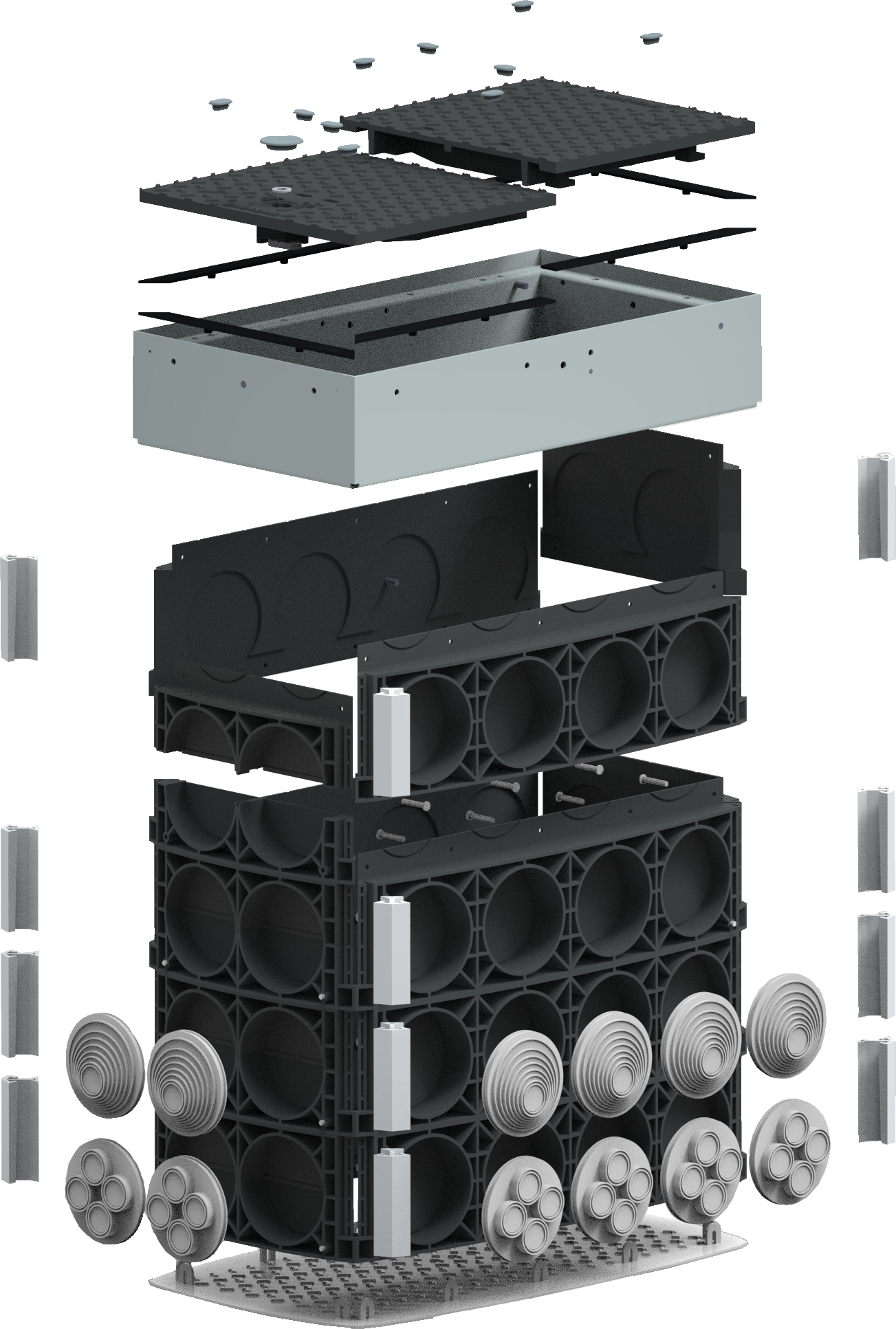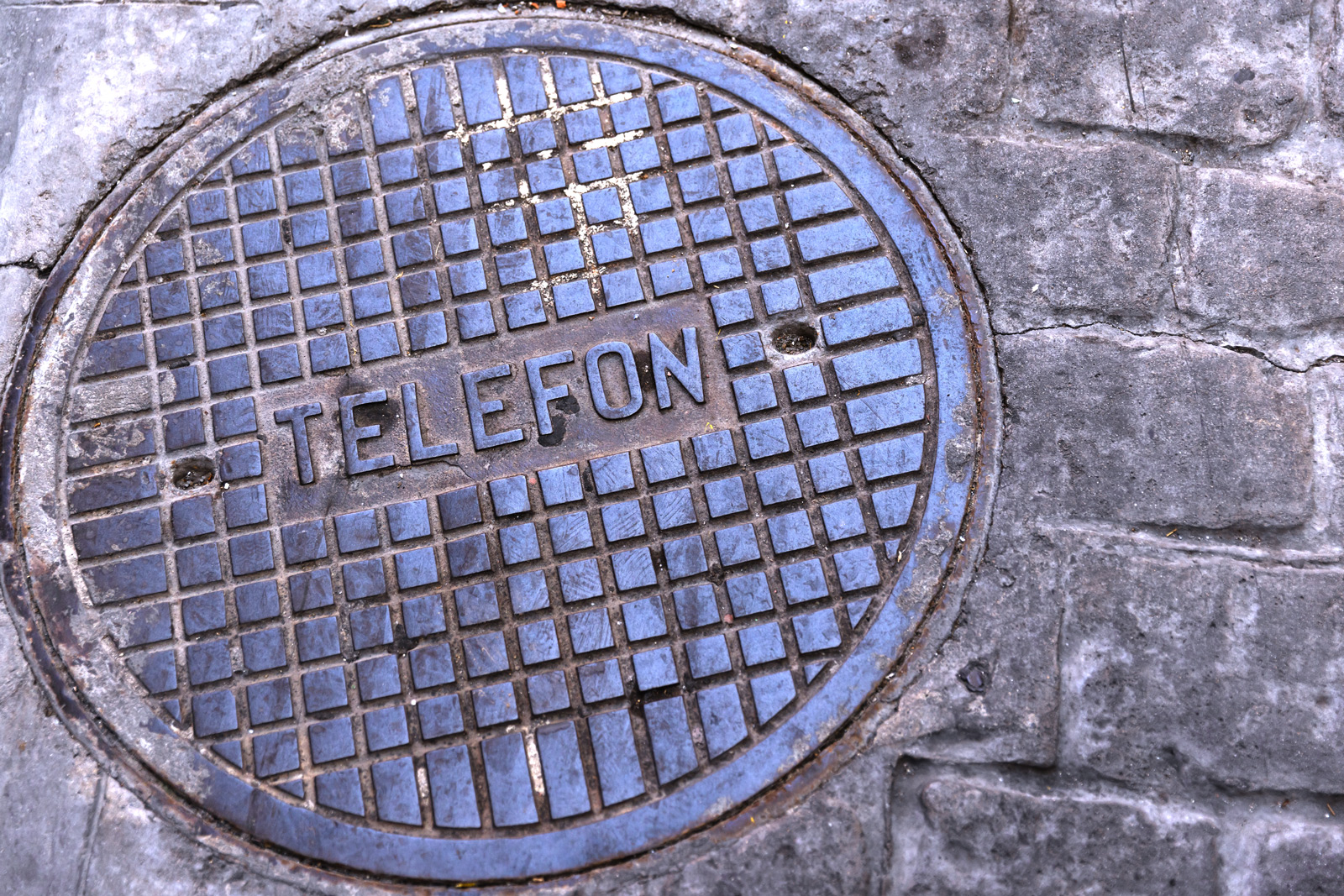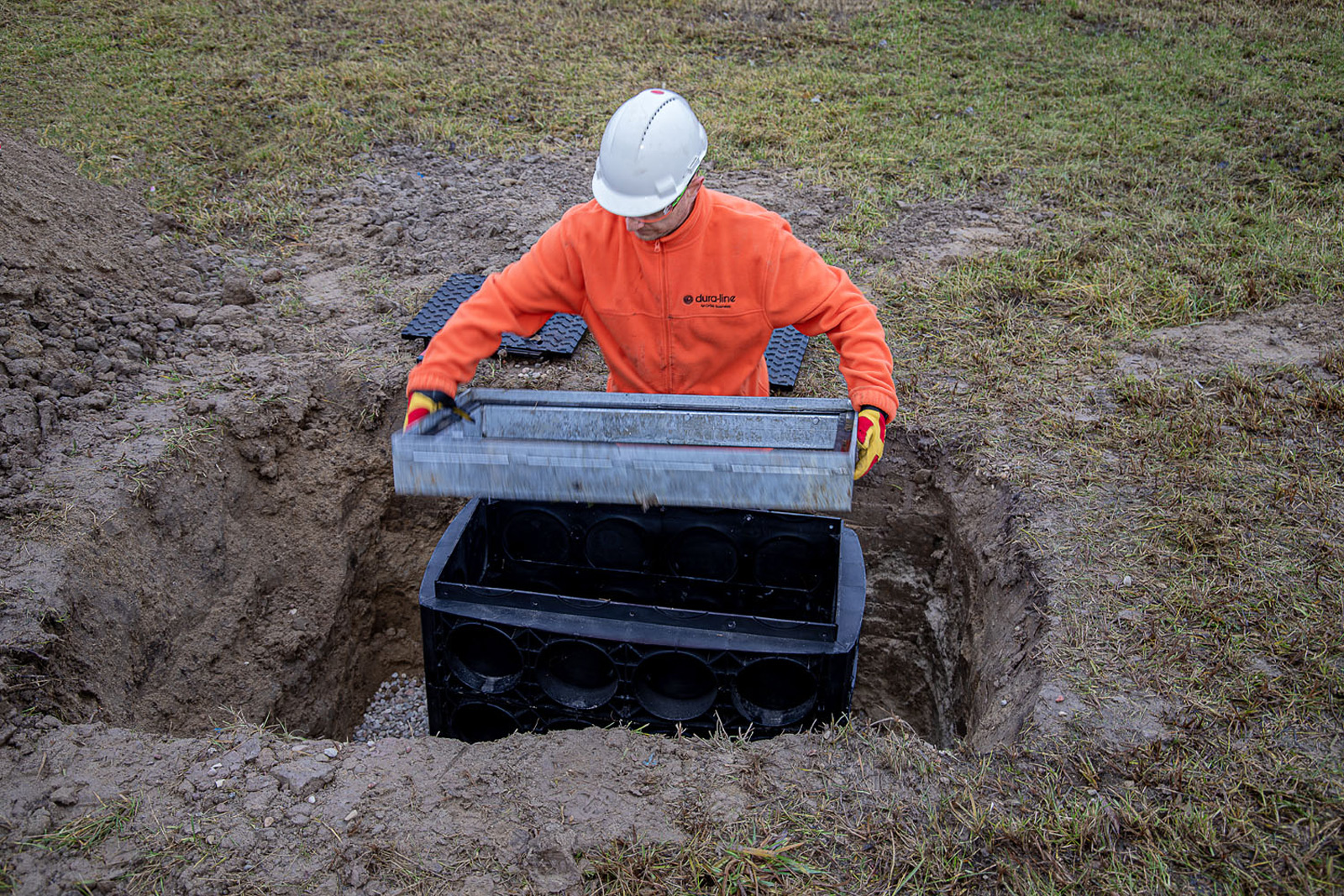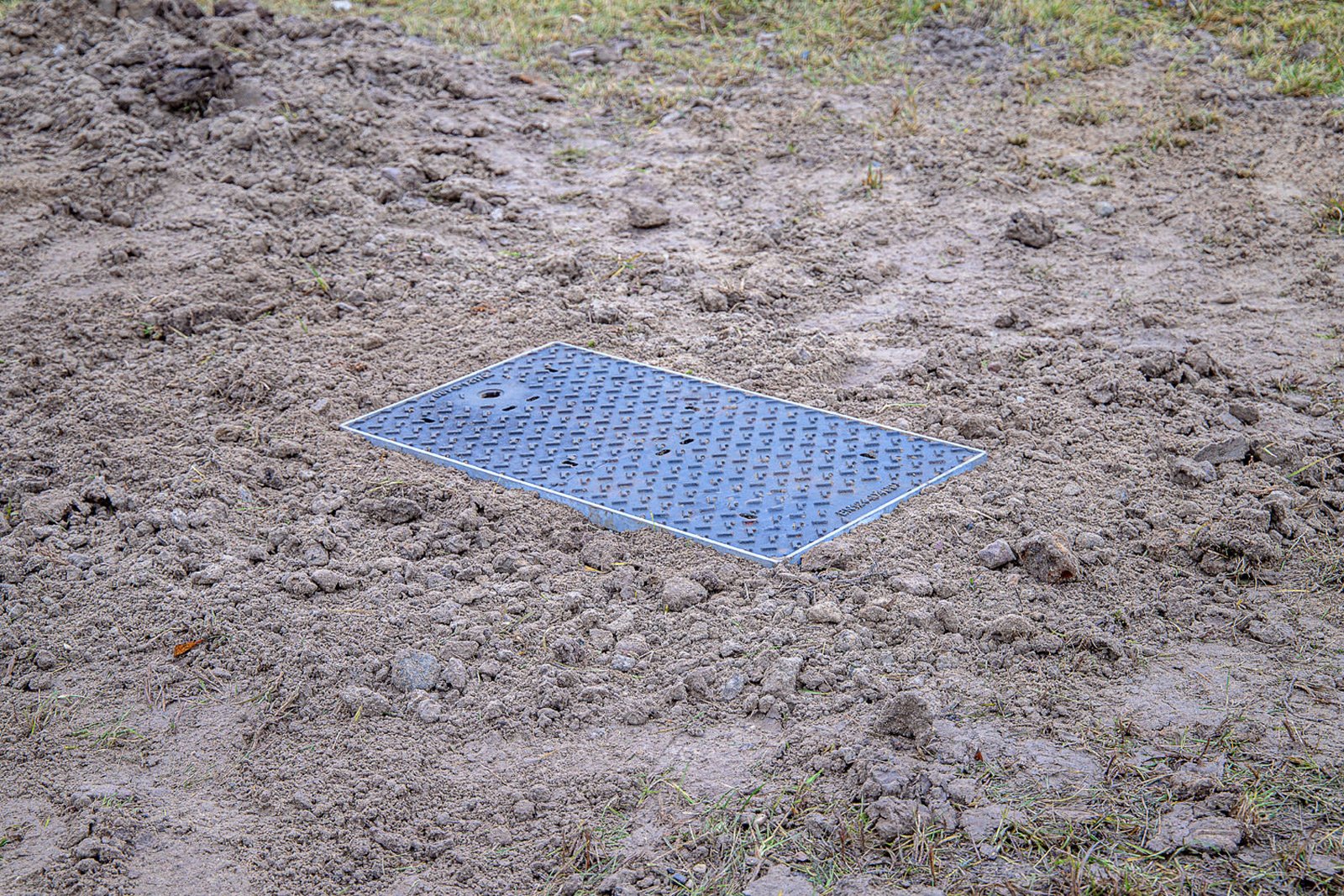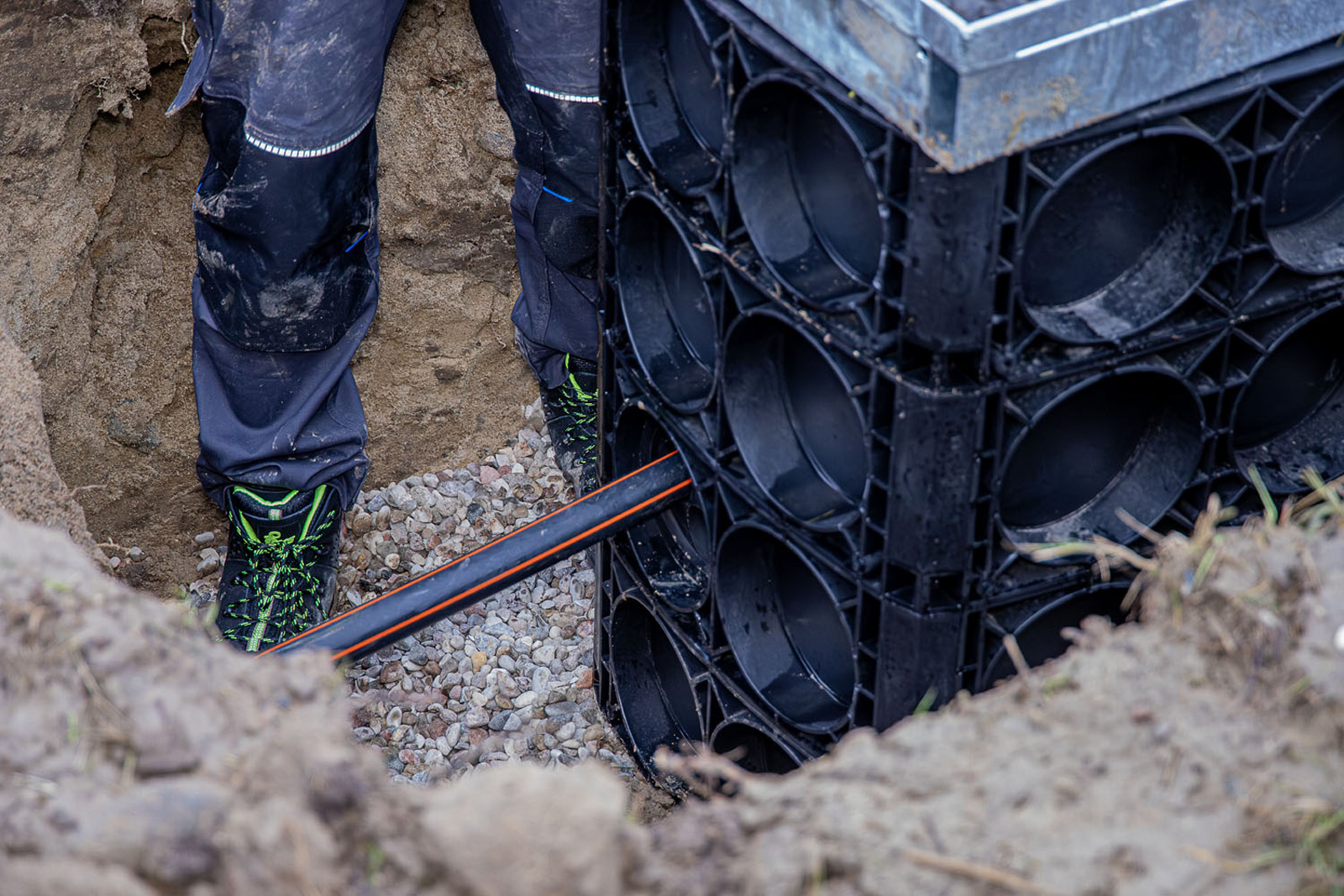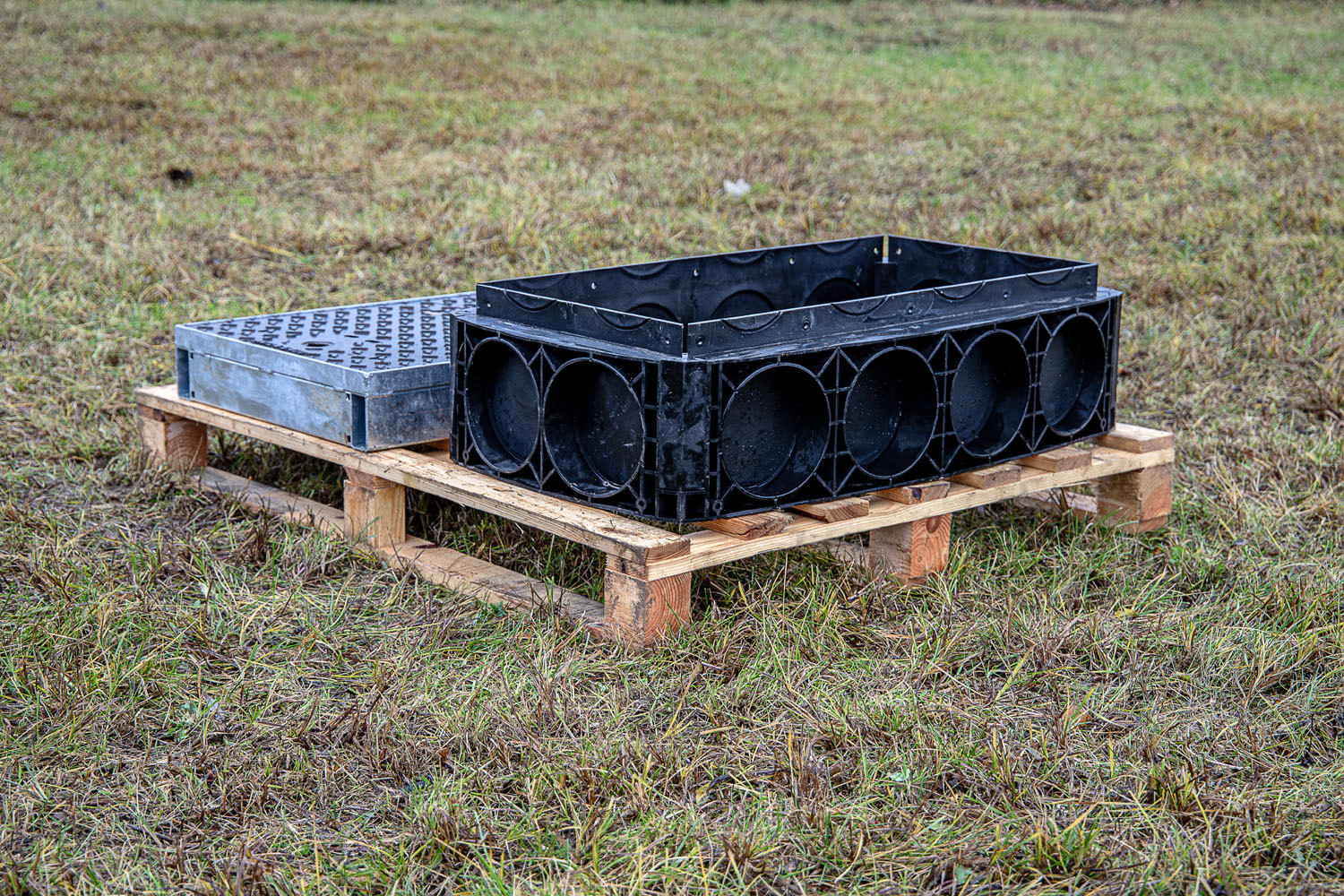Imagine you are planning to build a new high-capacity duct route through a busy city centre. You know construction and permits will be expensive, so you choose to install MicroDucts and FuturePath via a trenchless technology like MicroTrenching to give you maximum fibre capacity as quickly and cost-effectively as possible. You’ll be in and out in a few days!
You also know that for the business case to work, your new network must attract as many nearby subscribers as possible. So, you decide to place underground access chambers every 100 metres along the route to facilitate branch and drop connections.
But then you realise that to install the precast concrete chambers that are prevalent in your market, you’ll need heavy lifting equipment, specialist installers, and extensive traffic management. Suddenly, your deployment isn’t looking so efficient.
For a long time, this scenario was all too common – one reason why, over the past 20 years plus, operators globally have turned to preformed modular plastic chambers to improve the speed and efficiency of their network rollouts, without compromising on long-term strength and performance. Here are five reasons you should choose them for your next fibre build.
Introducing Chamber HQS from Dura-Line
Chamber HQS is a preformed, structural underground access chamber for use in outdoor communications networks. It protects critical underground assets and provides an access point for network installation and maintenance. Chamber HQS provides an easier, more flexible, and more sustainable alternative to concrete and brick-built chambers with benefits to network owners and constructors alike.
With a D400 loading class (EN-124), Chamber HQS can be installed in grass verges, pavements, or roads/carriageway. Chambers are supplied in flat pieces or rings for efficient transportation and storage and easy on-site configuration in as little as 20 minutes. Prefabricated duct entry points can be removed quickly without drillingdrilling and fitted with rubber seals compatible with Dural-Line’s portfolio of conduits and MicroDucts.
Finally, Chamber HQS features an adjustable cover frame to ensure the right height and angle to match the surrounding surface. A chamber cover that is not level with the surrounding surface can pose a tripping hazard for pedestrians and cause uneven pressure on the chamber from vehicles or plant loading. That is why the height and angle of Chamber HQS’ cover can be adjusted in 8 different locations for maximum accuracy, without removing the chamber itself or additional construction work.
